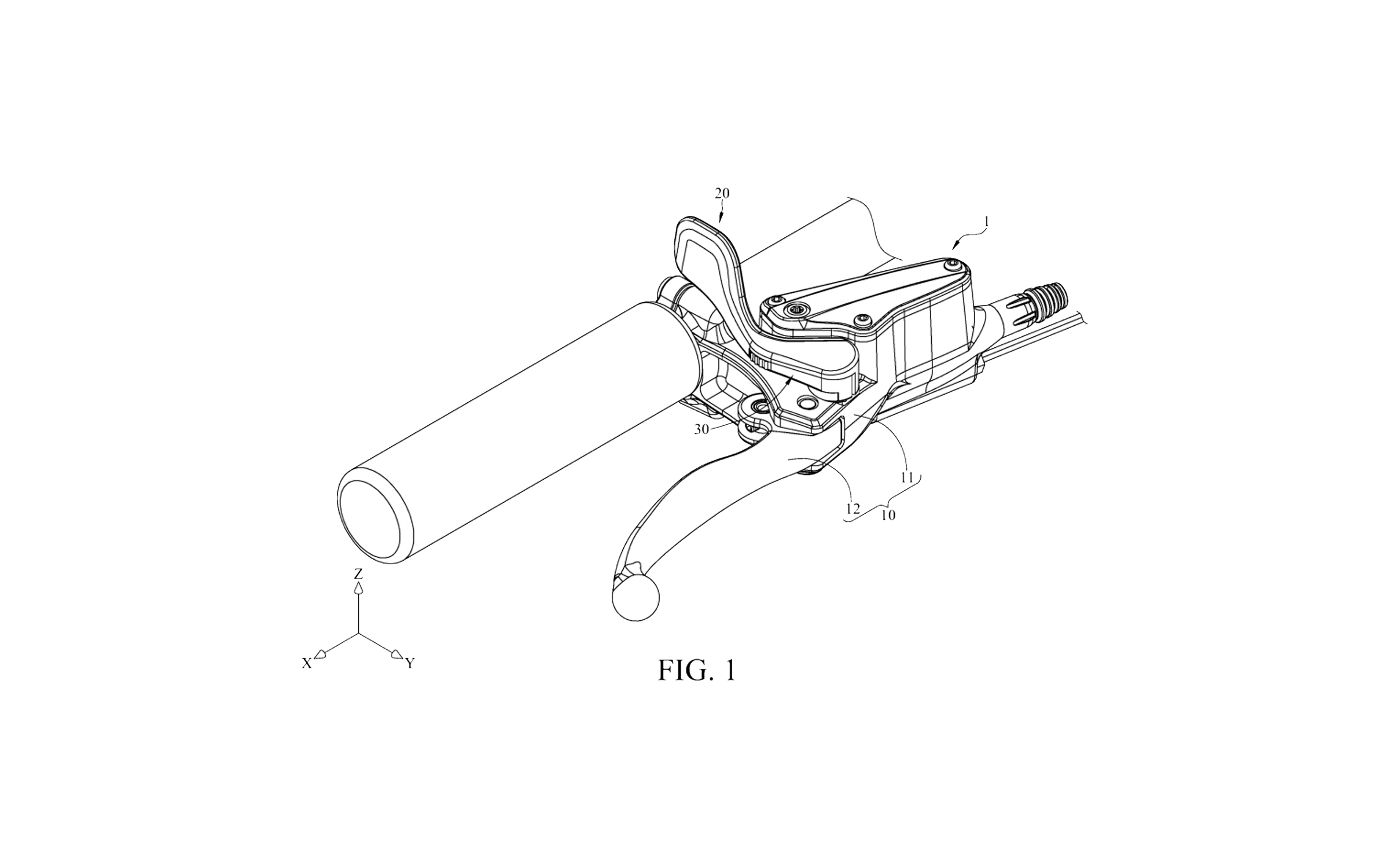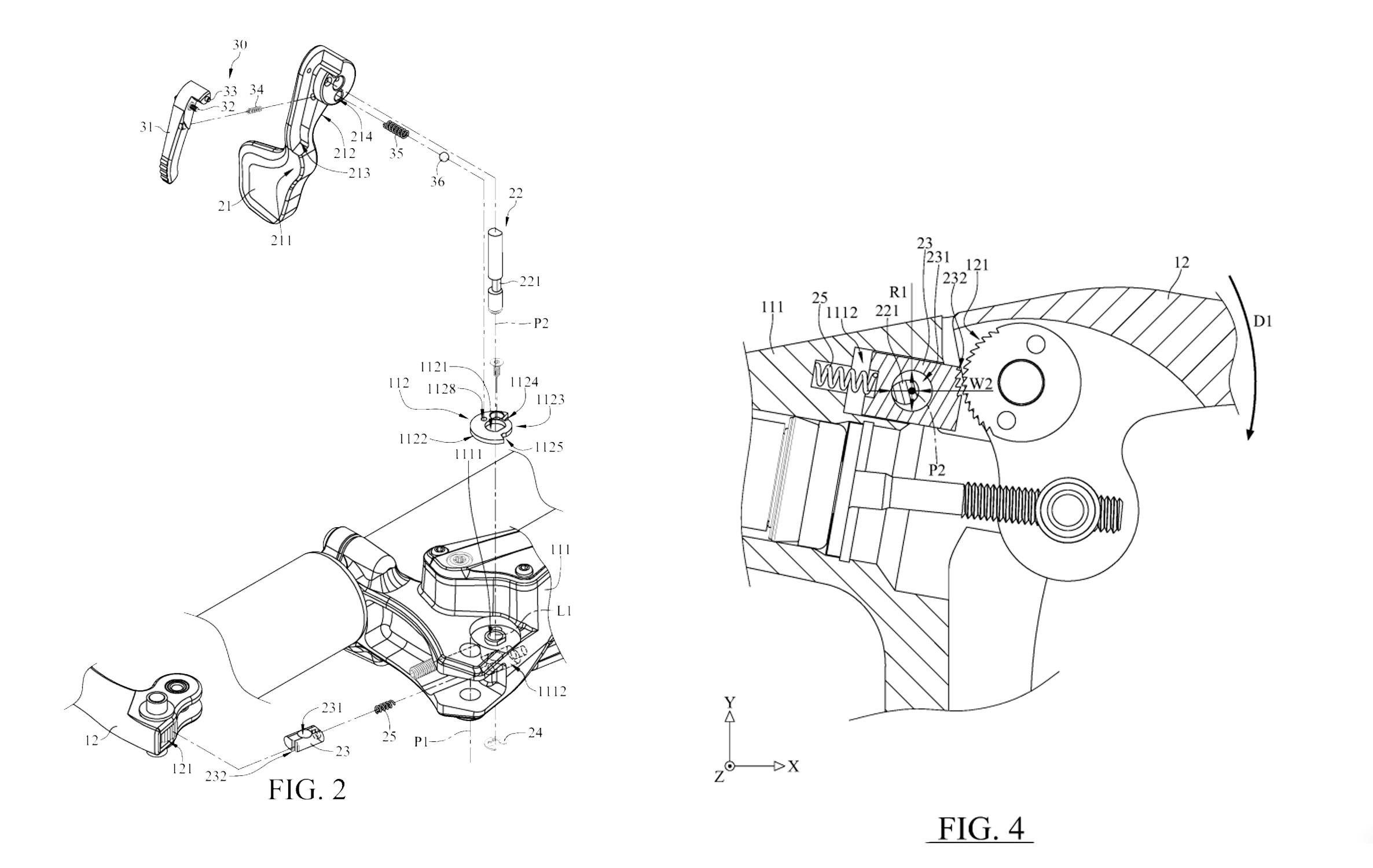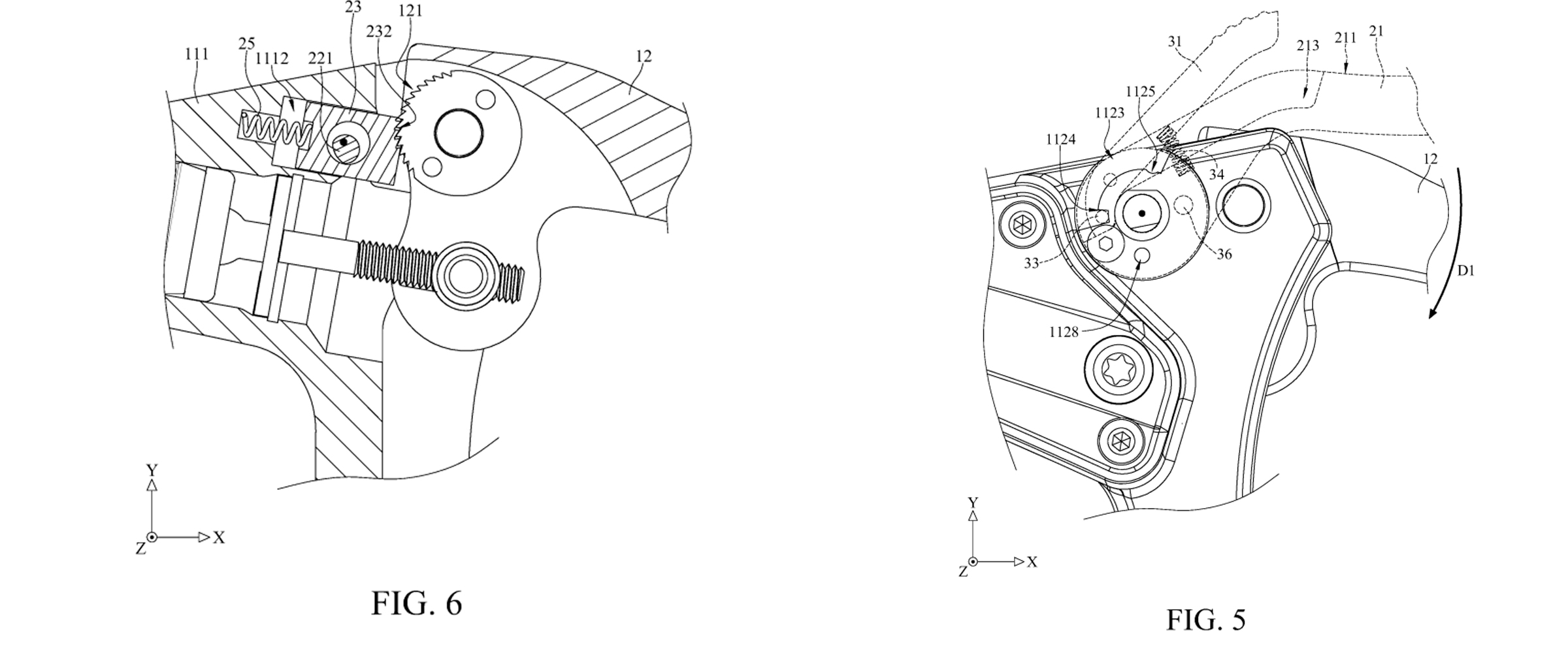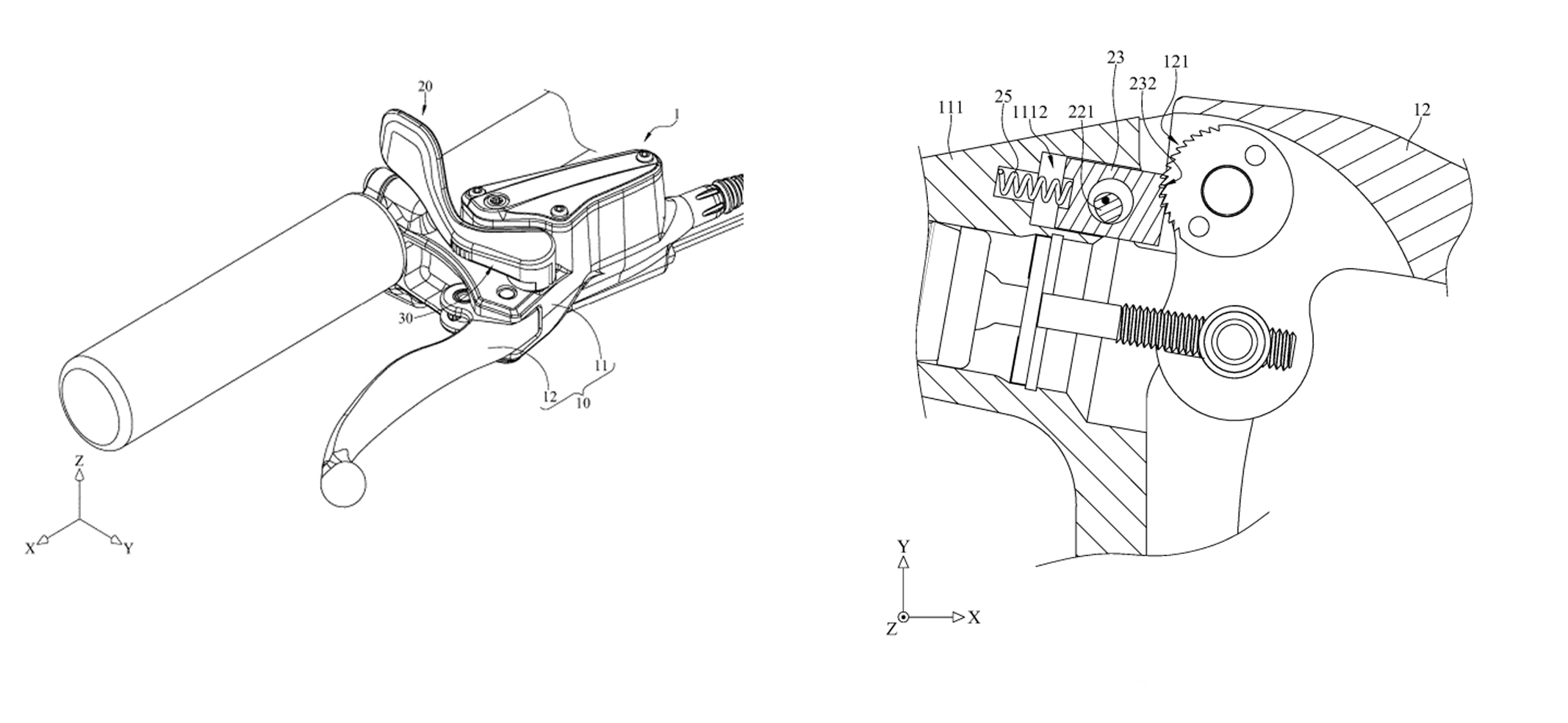Before you fire up the ol’ comment machine and launch into your arguments why a bike doesn’t need a parking brake, get your mind into mobility mode. The cycling world is changing around us, and Tektro’s patent filing for a bicycle parking brake appears to look ahead to a bright mobility future.
Why would a bike need a parking brake?

You probably don’t need one on your mountain bike ride. Your road or gravel bike? Forget it.
But what about the massively-growing e-bike market? How about cargo bikes? Both of those categories of bicycle tend to be fairly hefty. Batteries of course add weight, and when a cargo bike’s loaded down, it gets heavy even for the muscular folks among us (I don’t count myself in this group).
Tektro’s parking brake patent spells out a system that would allow a rider to apply the brakes and keep them applied. That could come in handy when parking a heavier bike on an incline, for example.
What’s new and nifty about the parking brake

Of course, parking brakes aren’t exactly new, even on bicycles. But Tektro’s parking brake patent outlines a system that prevents a rider from accidentally releasing the parking brake.
The brake lever assembly pictured in the patent appears to be a hydraulic brake. But this system looks as though it could work with a cable-actuated system, too. The parking brake lever itself is mounted to the top of the brake’s master cylinder housing, independent of the brake lever itself.
The parking brake lever is actually two levers, one nested into the other. When a rider pulls the main (larger) lever to activate the parking brake, the smaller, nested lever lags behind, opening up a gap between the two levers.
This smaller lever of the parking brake system is the release lever. The larger is the engagement lever. Pulling on the engagement lever allows the rider to engage the parking brake. Pulling on that lever again — whether on purpose or by accident — will not release the parking brake.
In order to do that, the rider needs to pull on the smaller, nested lever to return it to its nested position and disengage the parking brake.
The entire system essentially prevents accidental releases of the parking brake.
How the Tektro parking brake works

The Tektro parking brake uses a simple ratcheting system to engage the parking brake. A notched plate appears to be mounted to the brake lever itself. The engagement lever also attaches to this notched plate. The round notched plate mates with a spring-loaded block, which is also notched. When the plate rotates in one direction, it can spin freely because the teeth can push the spring-loaded block plate. But the teeth lock in place when the notched plate attempts to rotate in the opposite direction.
That’s where the nested release lever comes in. This lever disengages the spring-loaded block plate so the round notched plate can rotate freely back to the original position. The system otherwise cannot move back to the “released” position until the nested release lever is pulled to disengage the system.
Think about how your freehub body works. It can rotate freely in one direction because the spring-loaded teeth inside the body can move out of the way of the notches inside the hub shell. They are mounted at an angle to make it easy for the teeth to slide over the notches inside the hub shell. When you coast, that’s the buzzing sound you hear: The teeth sliding over the notches.
But when you start to pedal, the teeth lock into place, preventing the freehub body from moving freely within the hub shell. That’s how you transfer power.
The Tektro parking brake operates on a somewhat similar system.
Will we see it? And do you need it?
This nifty system looks pretty darn viable for a lot of applications. I don’t imagine we’ll see it crop up on most road, gravel, or mountain bikes. But as cargo bikes continue to crop up in urban areas, and e-bikes grow in popularity, the Tektro parking brake may very well find a home on commuter bikes in the near future.
Do you need it? For most riding situations, probably not. But it’s not difficult to think up situations in which such a parking brake would come in handy. Parents who tote kids around on commuter bikes would certainly appreciate a parking brake. E-bike and commuter bike riders too. And it seems like a no-brainer for anyone who owns a cargo bike, particularly in hilly areas.
Patent research assistance provided by Wheelbased.com. Check them out for deeper dives on some of these patents and more.
